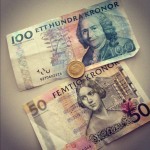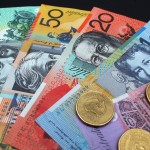Gold headed for a second weekly gain after minutes from the Federal Reserves policy meeting in July showed officials needed more evidence of a strengthening economy, signaling a September interest rate increase may be unlikely.
Gold for delivery in December traded 0.88% higher at $1 137.8 per troy ounce at 06:34 GMT, having earlier risen to $1 141.8, the highest since July 17th. The precious metal jumped 1% on Wednesday to $1 127.9 and is currently up 2.3% for the week.
The US dollar tumbled on Wednesday, easing pressure on dollar-denominated commodities including gold, after minutes from the FOMCs July meeting showed policy makers needed more proof that the labor market is healing and that inflation is moving toward the targeted level in order to increase borrowing costs. Fed officials were concerned that low inflation and a weak global economy posed a sizable risk for the US economy, paring speculations for an interest rate hike in September and boosting golds investment appeal.
Investors tend to avoid the yellow metal during times of economic growth and tighter monetary policy as it pays returns only through price gains, while holders of other assets, such as bonds, benefit from the higher interest rates.
The Fed minutes added to recent support provided last week by the unexpected devaluation of the Chinese yuan which shocked the markets and fanned fears of a currency war. However, as those fears subsided after the Peoples Bank of China verbally supported the yuan later in the week, focus had once again fallen on the Federal Reserves decision making.
Recent data had shown that manufacturing activity in New York in August fell to the lowest since 2009, but a gauge of homebuilder sentiment hit the strongest in almost a decade. A report on Tuesday pinned US new home construction in July at the highest in almost eight years but Wednesdays inflation data showed consumer prices in the US barely rose in July on both monthly and annual basis.
The US dollar index contract for settlement in September slid 0.7% on Wednesday to 96.368, dropping into negative weekly territory, after it earlier had risen to a one-week high of 97.105. The US currency gauge was up 0.09% at 06:33 GMT on Thursday at 96.455.
However, although many investors had bet on a September hike and Wednesdays minutes came as a disappointment, a move next month is still not ruled out, with a Bloomberg survey showing that traders are still pricing a 38% probability for a hike in September, down from 54% on August 7th. Also, the lack of action in September would boost the probability of a hike in December amid broad expectations for a lift-off this year, unless a significant deterioration in the streaming key economic data is at hand. Thus, golds rebound is seen as short-lived by analysts and the metal will likely come under pressure again.
Holdings in gold-backed ETPs rose 0.2% on Wednesday, according to Bloomberg data, but were still near the lowest since 2009. Assets in the SPDR Gold Trust, the biggest bullion-backed ETF, were unchanged for a fifth day on Wednesday at 671.87 tons after they rebounded a week earlier from the lowest since September 2008. Holdings in the fund have shrunk by little over 50% since peaking at at 1353.35 tons in December 2012.
Pivot points
According to Binary Tribune’s daily analysis, December gold’s central pivot point on the Comex stands at $1 125.9. If the contract breaks its first resistance level at $1 136.3, next barrier will be at $1 144.7. In case the second key resistance is broken, the precious metal may attempt to advance to $1 155.1.
If the contract manages to breach the S1 level at $1 117.5, it will next see support at $1 107.1. With this second key support broken, movement to the downside may extend to $1 098.7.
In weekly terms, the central pivot point is at $1 109.3. The three key resistance levels are as follows: R1 – $1 129.7, R2 – $1 146.6, R3 – $1 167.0. The three key support levels are: S1 – $1 092.4, S2 – $1 072.0, S3 – $1 055.1.





